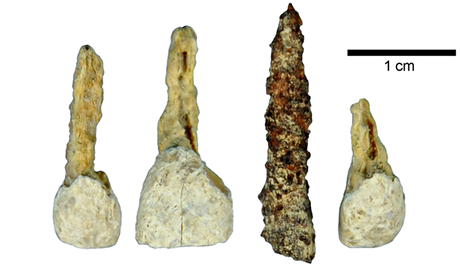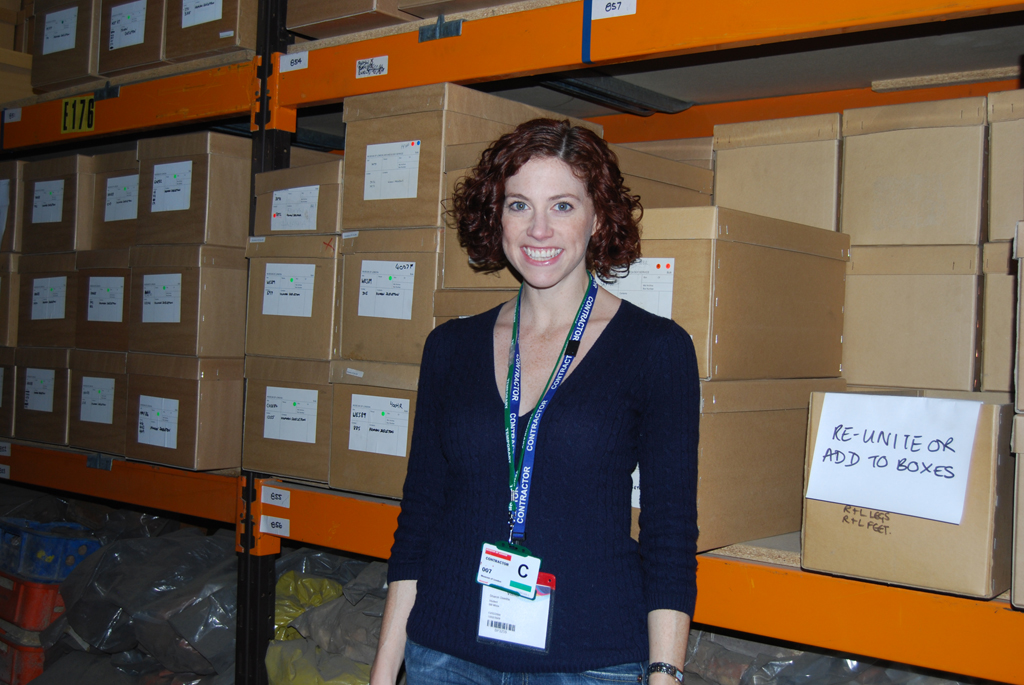Iron implant is same size and shape as incisors found with Celtic woman's remains – and was likely added after death
An iron false tooth found with real teeth at a Celtic grave at Le Chene, France. The implant is the oldest of its kind so far discovered in western Europe.
Photograph: Antiquity Publications Ltd
An iron tooth implant fitted about 2,300 years ago has been found in the grave of a young woman in northern France. Archaeologists believe it may have been fitted to beautify her corpse, as it would have been too excruciating to have had it hammered into the living jaw.
The corroded piece of metal is the same size and shape as the other incisors from her upper jaw – which did not survive as the timber tomb collapsed and crushed her skull – and its appearance may originally have been improved by a wooden or ivory covering.
Read the rest of this article...








































